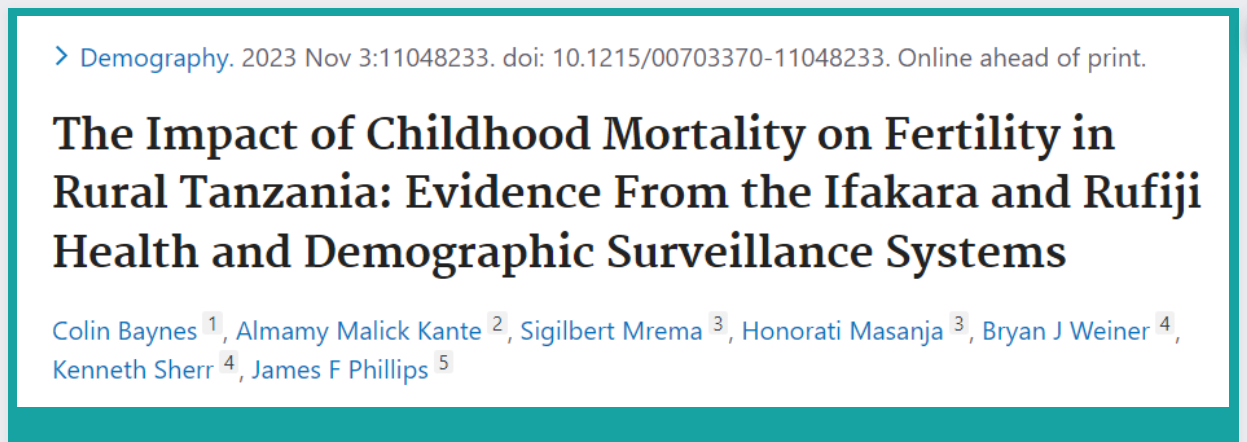
REPRODUCTIVE HEALTH: How child loss affects women’s fertility behavior

A study on Tanzanian mothers' reproductive practices, spanning 15 years, has revealed a complex link between child mortality and fertility, providing new insights into the country's reproductive practices.
The study, which was carried out between 2000 and 2015 in rural Tanzania, analyzed 15,291 mothers' experiences with child deaths and births.
Scientists from academic and research institutions, including Ifakara Health Institute’s Sigilbert Mrema and Honorati Masanja, contributed to this study which aimed to examine the effects of childhood mortality on women’s fertility behavior.
Why this study?
According to the scientists, it is vital to investigate the “fertility-mortality” relationship because of their “policy implications”. “Fertility and mortality processes are the driving forces governing population changes, so an understanding of the way they are linked is crucial for the design of policies that attempt to influence the course of population change,” they wrote in their paper published on the Demographic Journal.
Insurance, replacement factors
Two factors were taken into account to identify the link between child deaths and birth, such as the insurance effect (parents rushing to bear childbearing in anticipation of mortality risks), and the replacement effect (parents’ decision to have another child to replace a child who died).
The scientists then assessed whether other social determinants such as sex preferences, education level, the rate of child mortality in certain settings, the wider context of child mortality, and elapsed time moderated the two factors.
Responses to child death
One of the significant findings to emerge from the research is the impact of a child's death on the timing of subsequent conceptions. Notably, when a child passes away, mothers try to have another baby sooner, a phenomenon that reflects both insurance and replacement, where parents strive to replace lost children.
The study further revealed varying patterns between the “insurance effect” and “replacement effect” among different communities and socio-economic levels.
Scientists discovered that in communities with lower child mortality rates, the insurance effects were more pronounced, while in areas with higher child mortality, replacement effects were stronger.
In terms of socio-economic levels, wealthier families exhibited a weaker response to the insurance effect but a stronger reaction to the replacement effect when compared to families with fewer resources.
Scientists’ conclusion
The scientists noted that the study reveals a connection between child loss in rural Tanzania during the early 2000s and an increase in how quickly mothers have more children and recommend exploring more about how these connections change based on different factors like a person's wealth and the child mortality rates in the area.
Moreover, they propose further investigation into these relationships and how they might differ depending on a woman's social and economic status and the surroundings where child mortality occurs.
“In the future, similar studies in rural Tanzania should assess whether the effects of child survival improvements effect fertility change in subsequent cohorts of women of reproductive age.”
“Investigating these relationships is important because of their policy implications. If reproductive behavior does not respond to changes in infant and child mortality, then improved child survival is likely to lead to a higher growth rate.”
Other contributors to the study
In this study and publication, Ifakara scientists - Sigilbert Mrema and Honorati Masanja – worked along with colleagues from partner institutions. The study lead author is Colin Baynes from the University of Washington; Almamy Malick Kante from Johns Hopkins Bloomberg School of Public Health; Bryan Weiner and Kenneth Sherr also from the University of Washington; and James Phillips from Columbia University.
Read the full publication here
